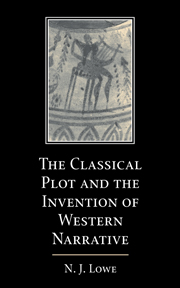3 - The narrative universe
Published online by Cambridge University Press: 22 September 2009
Summary
In this chapter, I want to use the vocabulary of games to set out an elementary system of terms and categories for discussing the structure of narrative worlds, and to give a brief account of what I see as their general range of functions in plotting as defined at the end of the previous chapter. The resilience of the game analogy makes it possible, I think, to get away with a reasonably parsimonious lexicon of basic terms and types. They fall into three groups. First, there is the shape of the total narrative universe in time (the narrative ‘clock’) and in space (the ‘board’). Second, there is the human population of that universe: the ‘players’, or characters, and the ‘moves’ they are empowered to make. Finally, there is the framework of external rules that they play by, and particularly the ‘endgame’ conditions that must be satisfied to complete the closure of narrative in story time.
The clock
When I say the game of plot is played to a narrative clock, I mean one that registers the difference between what we might call ‘story time’ and ‘text time’. Story time is the absolute chronology of the story universe, and (barring a few science-fictional exceptions) it obeys the rules of realworld temporality – with an irreversible arrow of causality and entropy, and (if we are allowed to overlook relativistic effects) a fixed rate of universal flow.
- Type
- Chapter
- Information
- Publisher: Cambridge University PressPrint publication year: 2000



